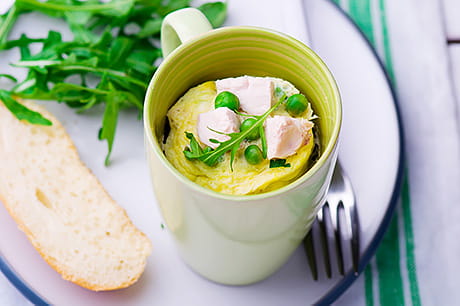Recipe: Put a twist on your popcorn
Try these popcorn recipes for the whole family and learn why it’s a healthy snack option.
by: Paulette Mordente, RDN
Popcorn has been a long-time classic snack food, but the many health benefits of this aromatic, crunchy treat might surprise you.
Health benefits of popcorn
The next time you reach for a snack, you might want to reach for popcorn. It’s filled with good-for-you nutrients and ingredients. Popcorn is:
High in antioxidants
Specifically called polyphenols, these compounds usually found in fruits and vegetables protect our bodies from inflammation.
An excellent source of fiber
There are almost 4 grams of fiber in a 3-cup serving. Eating more fiber has been associated with lower risk of developing heart disease, diabetes and some types of cancer. Fiber is also beneficial for good gut health by providing prebiotic properties.
100% whole grain
One serving of plain popcorn contains more than 70% of the recommended daily whole grain intake.
Low calorie
Three cups of plain popcorn are less than 100 calories. Because of its high fiber content, it’s a satisfying snack, stretching the feeling of fullness for longer periods of time.
Rich in nutrients
Because it’s a whole grain, it’s naturally high in many vitamins and minerals including vitamin B, iron, magnesium, phosphorus and zinc.
Popcorn is a versatile snack
There are several different ways to enjoy the crisp taste of home-popped popcorn. But your popping method matters.
Let’s compare the methods of making popcorn at home:
- Air popping – Because air-popping only uses hot air and no oil, this method has the fewest calories.
- Stovetop – This method requires oil, which can increase calories. Try using monounsaturated oils such as extra virgin olive oil, walnut or avocado oil, which are some of the healthiest fats. Keep in mind, you only need a tablespoon to pop ¼ cup of raw popcorn kernels.
- Microwave – While the most convenient, microwave popcorn is the least healthy option because of its high salt and fat content and the addition of many artificial flavorings.
Keeping popcorn healthy not only depends on the way it is popped, but of course the flavorings you add.
According to the USDA, a 3-cup serving of plain air-popped popcorn provides only 93 calories, 1.1 grams of fat, 1.9 mg of sodium, 19 grams of carbohydrates, 3.5 grams of fiber and 3 grams of protein. In other words, if you don’t douse your bowl in butter and cheese, you’re enjoying a really healthy snack.
Healthy popcorn recipe flavor options
You can use anything in your spice rack to add more flavor without adding too many calories. Spray prepared popcorn lightly with oil to help the seasonings stick. Be creative and blend flavors by combining your favorite seasonings to keep your snack light as well as tasty. And if you feel you need salt, use it sparingly.
Here are a few flavor ideas to get you started:
- Italian blend: Fresh or dried rosemary, garlic powder and small amounts of fresh grated asiago cheese
- Buffalo ranch: Granulated garlic, dried dill weed, cumin and hot sauce
- Taco: Nutritional yeast, cumin, cayenne
- Dessert popcorn: A light sprinkle of powdered sugar combined with spices like cinnamon, nutmeg, cloves or apple pie spice
The options are endless to have a flavorful as well as a nutritious snack that can be enjoyed by popcorn lovers of all ages.
Next steps:
Looking for more? Explore our dietitian-approved recipes
Want to meet with a nutritional specialist? Find a nutritionist near you





